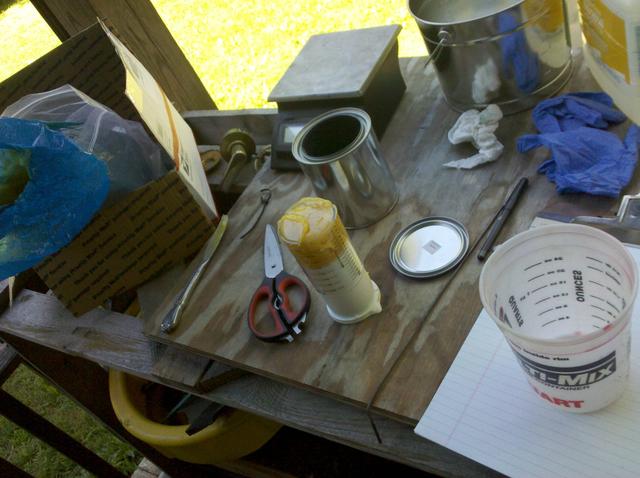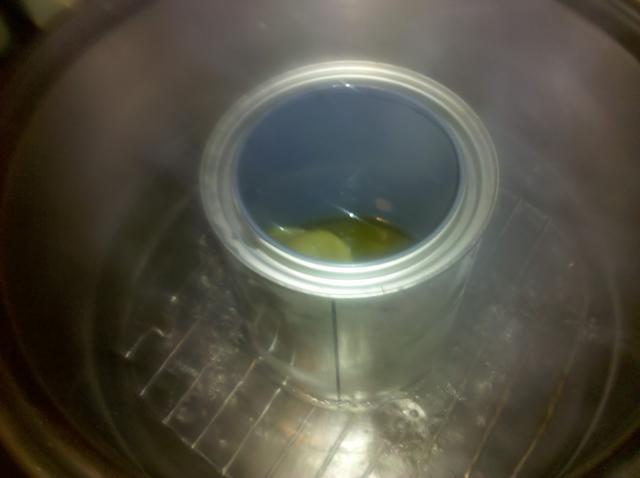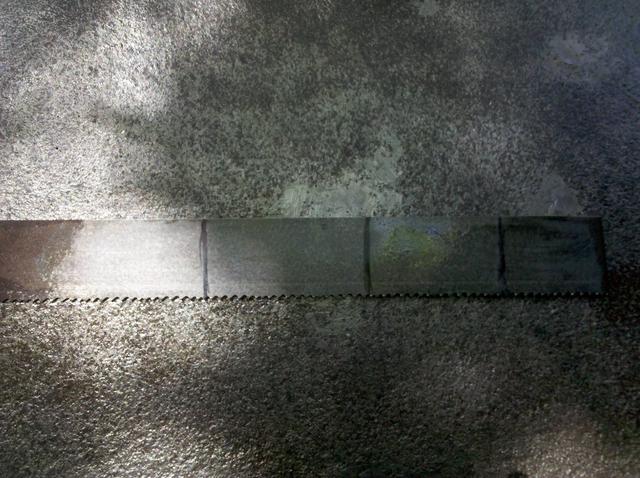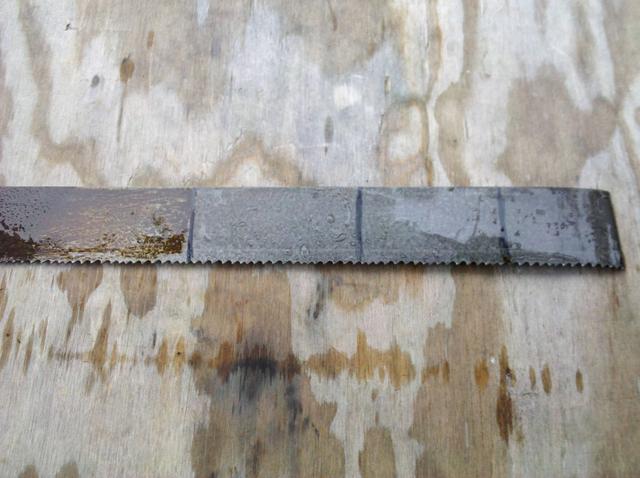moya034
AbsentMindedMetalWorker
- Joined
- May 23, 2013
- Messages
- 72
- Reaction score
- 20
I've recently stumbled upon a "tip" that I'm pretty excited about.
Ever since the lathe has been put together I've been battling rust on all the handles and bare metal surfaces that don't get way oil or some type of lubrication. After a couple days light surface rust shows up. Marvel's Mystery Oil and Nevr-Dull have been working well at removing it, but I can see very quickly where this will be a constant PITA on a regular basis as I will not be using the machine every day. (Well, that remains to be seen, actually.)
Recently, while researching solvents and lubrication for my recently acquired M1 Garand, I quickly stumbled upon a recipe on the internet known as "Ed's Red." One of the ingredients that caught my eye was anhydrous lanolin. After more research, I found out that lanolin has been used as a rust preventative for a very long time by mariners and machinists. The thing that attracted me in particular to use of lanolin was that it is a natural product derived from sheep and an ingredient used in various skin creams and products. If it works, it should be particularly good for the lathe and my various hand tools.
I read somewhere (didn't bookmark) that 1 part lanolin can be mixed with 5 parts mineral spirits to be used as a rust preventer. The idea is the mineral spirits thins the solution, evaporates, and leaves behind a coating of lanolin on the metal.
I picked up the bulk anhydrous lanolin from Amazon. One of those plunger type measuring cups made easy work of measuring out 4 fl oz which I then put in a quart paint can.

In this terrible image you can see I used a double boiler type arrangement to melt the lanolin. I then took it outside and stirred in 20 fl oz of mineral spirits.

I found a white paper online that I did not have access to download that discusses use of lanolin as a rust preventer. I was able to read the introduction, however, and it stated that the minimum percentage by weight that is needed is 12.5%. Since I used a volume based measurement to mix my solution, I weighed the lanolin and mineral spirits and determined 1 part to 5 parts comes in around 22%.
I put a rag in a pint paint can and thoroughly soaked it with some of the solution. I wiped all the non-oiled lathe parts down with it. I also decided to run a test to see how well it works in comparison to other stuff.
I took an old saw blade, wire wheeled it, and gave it a coat of naval jelly to get all oxides off. Going from left to right: untreated metal, lanolin, oil film, WD-40. We'll see in a week or so how the test turns out.
I am already pleased with how the lanolin treated surfaces feels to the skin. It doesn't feel oily at all, and you can handle other objects without getting oil over them. Probably less chance of cancer too.

The test coupon has been outside for two days. It started raining last night. The untreated portion has clearly rusted up quickly. So far there are no signs of rust on the other three quadrants. What I find particularly interesting however is look at how the water has created a film over top the untreated area, oil film area, and WD-40. However on the lanolin treated area, the water has apparently beaded up and is largely "dry". (Still no rust on the lathe )
)
Going from left to right: untreated metal, lanolin, oil film, WD-40.

Ever since the lathe has been put together I've been battling rust on all the handles and bare metal surfaces that don't get way oil or some type of lubrication. After a couple days light surface rust shows up. Marvel's Mystery Oil and Nevr-Dull have been working well at removing it, but I can see very quickly where this will be a constant PITA on a regular basis as I will not be using the machine every day. (Well, that remains to be seen, actually.)
Recently, while researching solvents and lubrication for my recently acquired M1 Garand, I quickly stumbled upon a recipe on the internet known as "Ed's Red." One of the ingredients that caught my eye was anhydrous lanolin. After more research, I found out that lanolin has been used as a rust preventative for a very long time by mariners and machinists. The thing that attracted me in particular to use of lanolin was that it is a natural product derived from sheep and an ingredient used in various skin creams and products. If it works, it should be particularly good for the lathe and my various hand tools.
I read somewhere (didn't bookmark) that 1 part lanolin can be mixed with 5 parts mineral spirits to be used as a rust preventer. The idea is the mineral spirits thins the solution, evaporates, and leaves behind a coating of lanolin on the metal.
I picked up the bulk anhydrous lanolin from Amazon. One of those plunger type measuring cups made easy work of measuring out 4 fl oz which I then put in a quart paint can.

In this terrible image you can see I used a double boiler type arrangement to melt the lanolin. I then took it outside and stirred in 20 fl oz of mineral spirits.

I found a white paper online that I did not have access to download that discusses use of lanolin as a rust preventer. I was able to read the introduction, however, and it stated that the minimum percentage by weight that is needed is 12.5%. Since I used a volume based measurement to mix my solution, I weighed the lanolin and mineral spirits and determined 1 part to 5 parts comes in around 22%.
I put a rag in a pint paint can and thoroughly soaked it with some of the solution. I wiped all the non-oiled lathe parts down with it. I also decided to run a test to see how well it works in comparison to other stuff.
I took an old saw blade, wire wheeled it, and gave it a coat of naval jelly to get all oxides off. Going from left to right: untreated metal, lanolin, oil film, WD-40. We'll see in a week or so how the test turns out.
I am already pleased with how the lanolin treated surfaces feels to the skin. It doesn't feel oily at all, and you can handle other objects without getting oil over them. Probably less chance of cancer too.

The test coupon has been outside for two days. It started raining last night. The untreated portion has clearly rusted up quickly. So far there are no signs of rust on the other three quadrants. What I find particularly interesting however is look at how the water has created a film over top the untreated area, oil film area, and WD-40. However on the lanolin treated area, the water has apparently beaded up and is largely "dry". (Still no rust on the lathe
Going from left to right: untreated metal, lanolin, oil film, WD-40.





